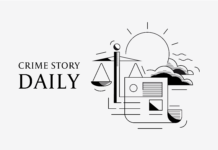This is a curated selection of highlights from Crime Story Daily this week.
On the criminal justice policy front: A piece from The New Yorker focuses on Florida, where, with two months to go before Election Day, Republican lawmakers are doing everything they can to prevent as many as eight hundred thousand former felons living in the state from casting a ballot. And the Los Angeles Times reports from California, where a proposal to decertify police officers convicted of serious misconduct was shot down in the state Senate Monday night. The piece outlines how – between partisan conflict, infighting among Democratic legislators, and intense lobbying by law enforcement interests – even this relatively modest proposal was derailed.
In muckraker/watchdog reporting: Pieces from HuffPost and The Intercept highlight the “thin blue line” between violent, far-right militias and police. As historic uprisings against police brutality have swept the country in recent months, antagonistic right-wing vigilantes have been a constant, menacing presence. Often seen patrolling Black Lives Matter protests with the tacit, if not explicit, support of law enforcement, these vigilantes have shot protesters, beaten them, and attacked them with cars. Both pieces examine the wave of vigilante violence that has swelled this summer in response to the BLM protests, as well as the longstanding relationship between white vigilantism and law enforcement, which have historically been eager partners in suppressing movements for racial justice and liberation. Another piece from HuffPost goes inside the “dangerous online fever swamps” of American police: the toxic ecosystem of right-wing police Facebook groups, “news” sites, and message boards where cops share racist memes, spread disinformation, and openly call for violence against protesters. And, in a piece for Slate, reporter Justin Peters recounts his own experience of an online “warrior cop” seminar, where he learned to “treat neighborhoods like battlegrounds – and to always be ready to kill.”
In complex crime storytelling: Pieces from The New Yorker and the Washington Post focus on Kenosha, Wisconsin, where the police shooting of Jacob Blake has deepened longstanding tensions and resentments between the city’s Black community and its white, conservative leadership. And a piece from The Marshall Project focuses on California, where firefighters have been battling unprecedented blazes and staffing shortages this wildfire season. Before the pandemic, thousands of the state’s wildfire crews came from state prisons; but this summer, as almost 600 wildfires burn across Northern California, hundreds of incarcerated firefighters have gone home, part of an early release program initiated by Gov. Gavin Newsom to protect them from the coronavirus. The shortage has called attention to both the state’s reliance on prison labor to fight fires, and to a longstanding critique of the program: how hard it is for those same inmates to become professional firefighters once they’re free.
And in culture/true crime: A piece from The Atlantic focuses on Drakeo the Ruler, the 26-year-old LA rapper whose new album, Thank You for Using GTL, was recorded and released from Men’s Central Jail, the abuse-riddled downtown-Los Angeles facility where he has been detained since last fall. When rappers, especially young Black men, write songs about police harassment or brutality, they are often dismissed outright; but at this moment of reckoning, the piece argues, more Americans could stand to seriously listen to the music of young rappers making art about – and despite – their firsthand experiences with the system. And a piece from the Columbia Journalism Review centers on the California-based Prison Renaissance Zine Project. Launched in 2017, the project pairs incarcerated writers and artists with Stanford University students to produce an annual magazine called “Incarceratedly Yours.” This spring, when the coronavirus began to explode inside prisons across the country and strict lockdown measures turned San Quentin into a black box, the group scrambled to produce an artistic response to the crisis. The final product, a special edition COVID-19 issue of “Incarceratedly Yours,” offers a vivid, emotionally intense look at life on the inside, in the inmates’ own words and on their terms.

